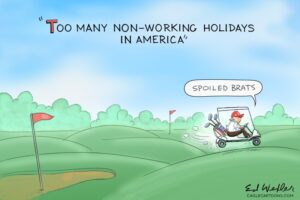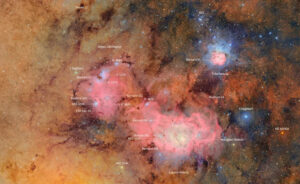
WASHINGTON — In a significant diplomatic breakthrough, the Democratic Republic of Congo and Rwanda signed a US-mediated peace agreement on Friday, aiming to end the decadeslong conflict in eastern Congo. The deal is expected to also pave the way for increased access to critical minerals by the US government and American companies.
Immediate Impact
President Donald Trump, addressing the foreign ministers of both nations at a White House meeting, declared, “Today, the violence and destruction comes to an end, and the entire region begins a new chapter of hope and opportunity, harmony, prosperity, and peace.”
The agreement was formalized at the State Department’s Treaty Room, with Secretary of State Marco Rubio hailing it as “an important moment after 30 years of war,” beneath the portrait of Colin Powell, the first African American Secretary of State.
Key Details Emerge
The conflict in the Central African nation of Congo has involved over 100 armed groups, with the most potent backed by Rwanda, responsible for millions of deaths since the 1990s. While the peace deal is a pivotal step, analysts remain cautious about its immediate impact, given that the most prominent armed group claims the agreement does not pertain to them.
“Some wounds will heal, but they will never fully disappear,” stated Congo’s Foreign Minister Therese Kayikwamba Wagner, emphasizing the importance of respecting the agreement.
Rwandan Foreign Minister Olivier Nduhungirehe expressed optimism but acknowledged the challenges ahead, noting the “great deal of uncertainty” due to past agreements not being implemented.
By the Numbers
7 million people displaced in Congo.
United Nations calls it “one of the most protracted, complex, serious humanitarian crises on Earth.”
Expert Analysis
Christian Moleka, a political scientist at the Congolese think tank Dypol, described the deal as a “major turning point” but cautioned that it “could in no way eliminate all the issues of the conflict.” He criticized the agreement for overlooking war crimes and justice for victims.
Meanwhile, Hope Muhinuka, an activist from North Kivu province, urged caution, stating, “I don’t think the Americans should be trusted 100%.” The region has been the hardest hit by the ongoing violence.
Background Context
The conflict traces back to the 1994 genocide in Rwanda, where Hutu militias killed between 500,000 and 1 million ethnic Tutsi, as well as moderate Hutus and Twa, Indigenous people. The aftermath saw nearly 2 million Hutus fleeing to Congo, fearing reprisals. Rwanda has accused these groups of participating in the genocide and alleges that elements of the Congolese army have protected them.
What Comes Next
The peace deal includes provisions on territorial integrity, prohibition of hostilities, and the disengagement, disarmament, and conditional integration of non-state armed groups. However, the M23 rebel group, the most prominent armed faction, has indicated that the agreement may not be binding for them.
Corneille Nangaa, leader of Congo River Alliance, emphasized that direct peace talks with Congo can only commence if the country acknowledges their grievances.
As the US seeks to counter China’s influence in Africa, the role of American access to Congo’s vast mineral wealth remains pivotal. The mostly untapped minerals are estimated to be worth as much as $24 trillion, according to the US Department of Commerce.
The announcement comes as the US and China actively compete for influence in Africa, with Chinese companies having been key players in Congo’s minerals sector for years.
As the peace deal progresses, the involvement of international partners such as Qatar, which facilitated the agreement, remains crucial. The future of the region depends on sustained diplomatic efforts and the implementation of the agreement’s terms.
Asadu reported from Dakar, Senegal. AP writers Edith M. Lederer at the United Nations, Justin Kabumba in Goma, Congo, and Ignatius Ssuuna in Kigali, Rwanda, contributed to this report.





